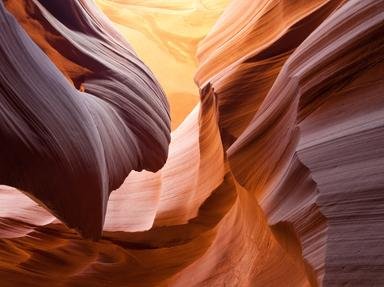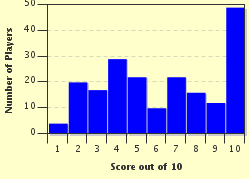Quiz Answer Key and Fun Facts
1. Corporal Slag was pleased that he was able to identify the volcanic rock rhyolite. Which other igneous rock shares the same chemical composition as rhyolite?
2. Sedimentary rocks can be classified based on the grain size of the constituent grains. Which of the following rocks is most likely to be categorized as rudaceous?
3. In its natural form, titanium dioxide occurs as which mineral in igneous and metamorphic rocks?
4. Corporal Slag picked up a rock containing the iron ore haematite. Keen to flaunt his recently acquired knowledge, Slag stated that the crystals were reniform in shape. What kind of shape does the description reniform indicate?
5. The next rock specimen had crystals of the mineral corundum. If the colour of the crystals was red, which precious gem stone had the Corporal found?
6. While collecting rock samples at the Banff National Park in Canada, Slag came across Moraine Lake in the Valley of the Ten Peaks. To what is the deep blue colour of the lake attributed?
7. Rift valleys are long troughs enclosed by steep faults on both sides. Which of the following lakes is formed within a rift valley?
8. Ridges are narrow, elongated, raised features on the surface of the earth that usually occur in the form of continuous chains of mountains. Which of the following types of ridges are formed by the action of glaciers?
9. Another rock specimen that Corporal Slag examined appeared to have a feature termed as 'ripple marks', a type of structure formed due to the action of water or wind. What type of rock would the Corporal have been looking at to have seen such a structure?
10. Rock crystal is a clear transparent variety of which common mineral?
Source: Author
zorba_scank
This quiz was reviewed by FunTrivia editor
WesleyCrusher before going online.
Any errors found in FunTrivia content are routinely corrected through our feedback system.

